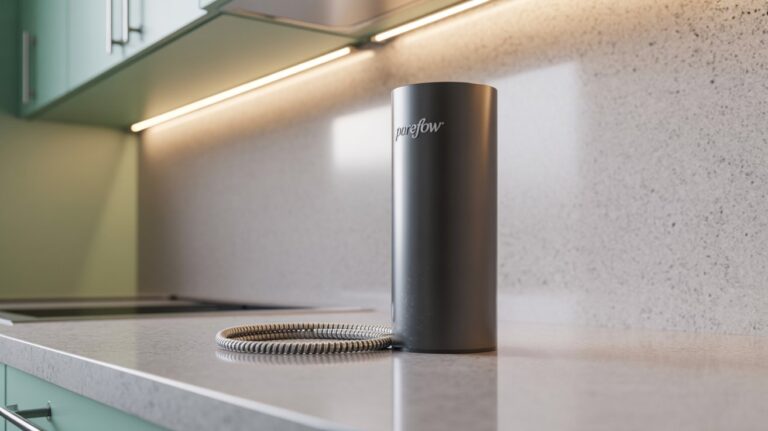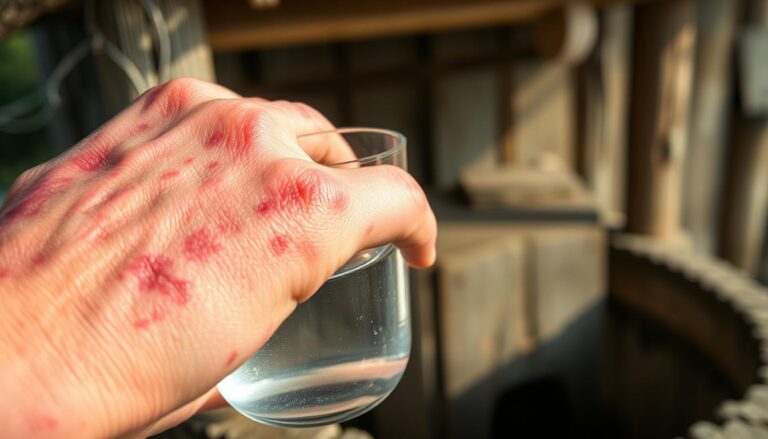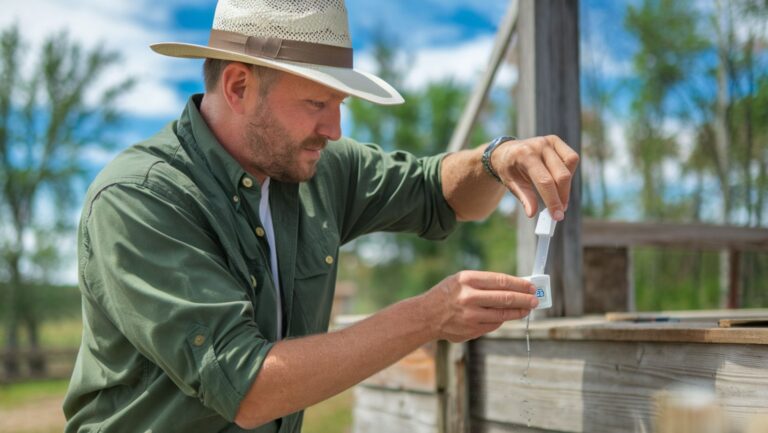Do You Need to Dechlorinate Well Water?
Is your well water safe to drink? Many homeowners with private wells worry about the presence of chlorine in their water supply. Chlorine is often used to shock the well and remove bacteria, but excess chlorine can affect the taste and quality of the water.
Excess chlorine can be a concern, but the good news is that there are ways to address it. Understanding whether you need to dechlorinate your well water is crucial for ensuring access to clean and safe drinking water.
Key Takeaways
- Chlorine is used to disinfect well water, but excess amounts can be problematic.
- Dechlorination may be necessary to improve the taste and quality of well water.
- Understanding the need for dechlorination is crucial for homeowners with private wells.
- There are methods available to dechlorinate well water.
- Proper maintenance can help minimize chlorine levels in well water.
Understanding Well Water Systems
For those relying on well water, understanding the intricacies of these systems is crucial for ensuring water quality. Well water systems are distinct from municipal water supplies in several key ways.
How Well Water Differs from Municipal Water
Unlike municipal water, which is treated with chlorine and other chemicals, well water is drawn directly from underground aquifers. This difference in sourcing means that well water is not subject to the same treatment processes as municipal water.
Common Contaminants in Well Water
Well water can contain various contaminants, including bacteria, viruses, and heavy metals. These contaminants can enter the water supply through natural or human-induced means.
Well Water Treatment Overview
Treatment of well water is essential to remove or reduce contaminants. Various treatment options are available, including filtration systems, UV treatment, and chemical disinfection.
| Treatment Method | Effectiveness | Maintenance Needs |
|---|---|---|
| Filtration Systems | High | Regular filter replacement |
| UV Treatment | High against bacteria and viruses | UV lamp replacement every 9-12 months |
| Chemical Disinfection | Effective against a broad range of contaminants | Regular monitoring of disinfectant levels |
Understanding these aspects of well water systems is vital for homeowners to make informed decisions about their water treatment needs.
The Presence of Chlorine in Well Water
The presence of chlorine in well water can be attributed to various factors, both natural and human-induced. While chlorine is more commonly associated with municipal water treatment, it can also be present in well water due to natural sources or as a result of human activities.
Natural vs. Added Chlorine
Chlorine can occur naturally in water sources, although at much lower levels than what is typically found in treated municipal water. However, the chlorine found in well water is more likely to be a result of shock chlorination, a disinfection process used to clean the well and surrounding area.
Why Chlorine Might Be Present in Your Well
Chlorine might be present in your well water if you’ve recently performed shock chlorination or if there’s been contamination. It’s also possible for chlorine to be introduced through nearby agricultural or industrial activities.
Shock Chlorination Practices
Shock chlorination involves adding high concentrations of chlorine to the well to kill bacteria and other microorganisms. For detailed guidance on this process, you can refer to resources like the Chester County Well Water Disinfection Procedure.
| Source of Chlorine | Description |
|---|---|
| Natural Occurrence | Low levels of chlorine can be naturally present in groundwater. |
| Shock Chlorination | High concentrations of chlorine added during well disinfection. |
| Agricultural/Industrial Activities | Nearby activities can potentially introduce chlorine into the well water. |
Do You Need to Dechlorinate Well Water?
Determining whether you need to dechlorinate your well water is crucial for ensuring the quality and safety of your drinking water. Chlorine can be present in well water due to various reasons, including natural occurrence or contamination from nearby sources.
Signs Your Well Water Contains Chlorine
Several signs may indicate the presence of chlorine in your well water. These include:
- A strong chlorine smell or taste
- Discoloration or cloudiness of the water
- Residue or staining on fixtures and appliances
If you notice any of these signs, it’s essential to investigate further.
Testing Methods for Chlorine Detection
Homeowners can test their well water for chlorine using various methods, including DIY kits and laboratory testing. DIY kits are convenient and provide quick results, while laboratory testing offers more comprehensive analysis.
Interpreting Water Test Results
Understanding the test results is crucial for determining the need for dechlorination. Test results will typically indicate the level of chlorine present in the water. If the levels are high, dechlorination may be necessary to ensure safe and healthy drinking water.
By following these steps, homeowners can make an informed decision about whether they need to dechlorinate their well water.
The Effects of Chlorinated Well Water
Understanding the effects of chlorinated well water is crucial for homeowners relying on well water systems. Chlorinated well water can have various adverse effects, including health risks, damage to household appliances, and harm to plants and gardens.
Health Implications
Consuming chlorinated water over time can lead to potential health issues. Chlorine can react with organic matter in water to form disinfection byproducts (DBPs), some of which are known carcinogens. Reducing chlorine exposure through dechlorination can mitigate these health risks.
Impact on Household Appliances and Plumbing
Chlorine can corrode pipes and damage appliances, leading to costly repairs. Using chlorinated water can reduce the lifespan of water heaters, dishwashers, and washing machines.
Effects on Plants and Gardens
Chlorine can be harmful to plants when used for irrigation. It can damage roots and disrupt nutrient uptake, affecting plant health and garden productivity.
Chlorine Byproducts and Their Risks
Chlorine byproducts, such as trihalomethanes (THMs) and haloacetic acids (HAAs), have been linked to various health concerns. Dechlorination can help minimize exposure to these harmful compounds.

Benefits of Dechlorinating Your Well Water
Dechlorinating your well water can have numerous benefits for your health, household, and the environment. By removing chlorine and its byproducts, you can enjoy a range of advantages that improve your overall quality of life.
Improved Taste and Odor
One of the most immediate benefits of dechlorinating your well water is the improvement in taste and odor. Chlorine can give water an unpleasant taste and smell, which can be particularly noticeable when drinking water or cooking.
Health Advantages
Dechlorinated water is healthier for consumption as it reduces exposure to chlorine byproducts, which have been linked to various health issues. For more information on how dechlorination can benefit your health, you can visit this resource on whole-house water treatment systems.
Extended Appliance Lifespan
Chlorine in water can corrode pipes and damage household appliances over time. By dechlorinating your well water, you can extend the lifespan of your appliances and plumbing system.
Environmental Considerations
Dechlorination also has positive environmental impacts. By reducing chlorine discharge into the environment, you can help protect aquatic life and reduce the overall environmental footprint of your water usage.
Methods for Dechlorinating Well Water
There are several effective methods for dechlorinating well water, each with its own advantages. The choice of method depends on various factors, including the level of chlorine contamination, budget, and specific needs.
Chemical Neutralization
Chemical neutralization involves using chemicals to remove chlorine from well water. Vitamin C (ascorbic acid) is a popular choice for this method due to its effectiveness and safety. It’s essential to follow the correct dosage instructions to ensure the water is safe for consumption.
Activated Carbon Filtration
Activated carbon filters are widely used for dechlorination. They work by adsorbing chlorine and other impurities, improving the taste and odor of the water. Regular maintenance is necessary to ensure the filter’s effectiveness.
UV Treatment
UV treatment is primarily used for disinfection, but it can also help in reducing chlorine levels. While not its primary function, UV light can contribute to the overall quality of the water by reducing certain contaminants.
Aeration Systems
Aeration systems work by exposing the water to air, allowing volatile compounds like chlorine to evaporate. This method is simple and effective for certain types of contamination.
Comparing Effectiveness of Different Methods
Each dechlorination method has its strengths and weaknesses. The choice depends on the specific requirements of your well water system. It’s recommended to consult with a water treatment professional to determine the most suitable method for your situation.
Whole-House Dechlorination Systems
For those concerned about chlorine in their well water, whole-house dechlorination systems provide a robust and effective treatment option. These systems are designed to remove chlorine from all water sources in the home, ensuring that every tap delivers clean, chlorine-free water.
Types of Whole-House Systems
There are several types of whole-house dechlorination systems available, including activated carbon filters, catalytic carbon filters, and systems that use chemical neutralization. Each type has its own strengths and is suited to different levels of chlorine contamination.
Installation Considerations
Proper installation is crucial for the effectiveness of whole-house dechlorination systems. Factors such as water pressure, flow rate, and the level of chlorine contamination must be considered to choose the right system.
| System Type | Effectiveness | Maintenance Needs |
|---|---|---|
| Activated Carbon | High | Regular Filter Replacement |
| Catalytic Carbon | Very High | Periodic Backwashing |
| Chemical Neutralization | High | Regular Chemical Replenishment |
Maintenance Requirements
Regular maintenance is essential to ensure the longevity and effectiveness of whole-house dechlorination systems. This includes replacing filters, cleaning or replacing media, and checking system performance.
Expected Lifespan and Replacement Schedules
The lifespan of whole-house dechlorination systems varies depending on the type, usage, and maintenance. Generally, these systems can last between 5 to 15 years, with some components requiring more frequent replacement.
Point-of-Use Dechlorination Options
When it comes to dechlorinating well water, homeowners have several point-of-use options to consider for specific applications. These targeted solutions allow for the removal of chlorine at the point of use, whether it’s for drinking water, showering, or other household needs.
Countertop Filters
Countertop filters are a convenient option for dechlorinating drinking water. They are easy to install and can be moved from one faucet to another. Many countertop filters use activated carbon technology to effectively remove chlorine and improve water taste.
Under-Sink Systems
Under-sink dechlorination systems provide a more permanent solution for treating drinking water. These systems are installed under the sink and can be connected directly to the faucet, offering a continuous supply of dechlorinated water.
Shower Filters
Shower filters are designed to remove chlorine from water used for bathing, which can help protect skin and hair from the harsh effects of chlorine. These filters are typically installed directly onto the showerhead.
Portable Water Bottle Filters
For those who need dechlorinated water on the go, portable water bottle filters offer a practical solution. These filters can be attached to water bottles or used with specialized containers designed for filtered water.

DIY Dechlorination Methods
For those looking to dechlorinate their well water without investing in expensive systems, DIY approaches offer a viable solution. Several methods can be employed to remove chlorine from well water, each with its own effectiveness and limitations.
Letting Water Stand
One simple method is to let the water stand for a period, allowing the chlorine to dissipate naturally. This method is free and easy to implement.
Boiling
Boiling water is another effective way to remove chlorine. Bringing water to a boil for 1-2 minutes can significantly reduce chlorine levels.
Vitamin C Addition
Adding Vitamin C, in the form of ascorbic acid or crushed vitamin C tablets, can neutralize chlorine. This method is particularly useful for immediate chlorine removal.
Limitations of DIY Approaches
While these DIY methods can be effective, they may not be as efficient or reliable as commercial dechlorination systems. It’s essential to understand their limitations and potentially combine methods for optimal results.
Regulations and Standards for Well Water
Understanding the regulations surrounding well water is crucial for homeowners. The Environmental Protection Agency (EPA) provides guidelines for private wells, but it’s essential to note that these guidelines may be supplemented or modified by state-specific regulations.
EPA Guidelines for Private Wells
The EPA sets standards for drinking water quality, including contaminants that may be present in well water. While these guidelines are not enforceable for private wells, they serve as a valuable reference for well owners.
State-Specific Regulations
Individual states may have their own regulations regarding well water quality, testing, and treatment. Homeowners should familiarize themselves with their state’s specific requirements.
Testing Frequency Recommendations
Regular testing is vital to ensure well water safety. The frequency of testing may depend on various factors, including local regulations and the well’s characteristics.
Documentation and Record Keeping
Maintaining accurate records of well water test results and treatment activities is essential for compliance and ensuring the ongoing safety of the water supply.
Cost Considerations for Well Water Dechlorination
Understanding the financial aspects of dechlorinating well water is essential for homeowners. Dechlorination involves various costs that need to be considered to make an informed decision.
Initial Investment
The initial cost of dechlorination systems can vary widely depending on the technology used. For instance, activated carbon filtration systems are generally more affordable upfront, while UV treatment systems may require a larger initial investment.
Ongoing Maintenance Expenses
Regular maintenance is crucial for the effectiveness of dechlorination systems. This includes replacing filters, checking for system malfunctions, and ensuring that the system is functioning correctly. Annual maintenance costs should be factored into the overall cost analysis.
Return on Investment Analysis
While the initial and ongoing costs are important, it’s also crucial to consider the long-term benefits. Dechlorination can extend the life of household appliances and plumbing, potentially saving money in the long run.
Financing and Rebate Options
Some regions offer financing options or rebates for installing water treatment systems. Homeowners should explore these opportunities to offset the costs.
Conclusion
Dechlorinating well water is a crucial step in ensuring safe and healthy drinking water for households relying on private wells. Summarizing the importance of this process highlights the need for awareness and action.
Throughout this article, we’ve explored the presence of chlorine in well water, its effects on health and household appliances, and the various methods available for dechlorination. By understanding the risks associated with chlorinated well water and the benefits of dechlorination, homeowners can make informed decisions about their water treatment needs.
Whether through whole-house dechlorination systems, point-of-use options, or DIY methods, removing chlorine from well water can significantly improve the quality of drinking water. As we conclude, it’s clear that taking proactive steps towards dechlorinating well water is essential for protecting the health and well-being of families and preserving the longevity of household systems.







